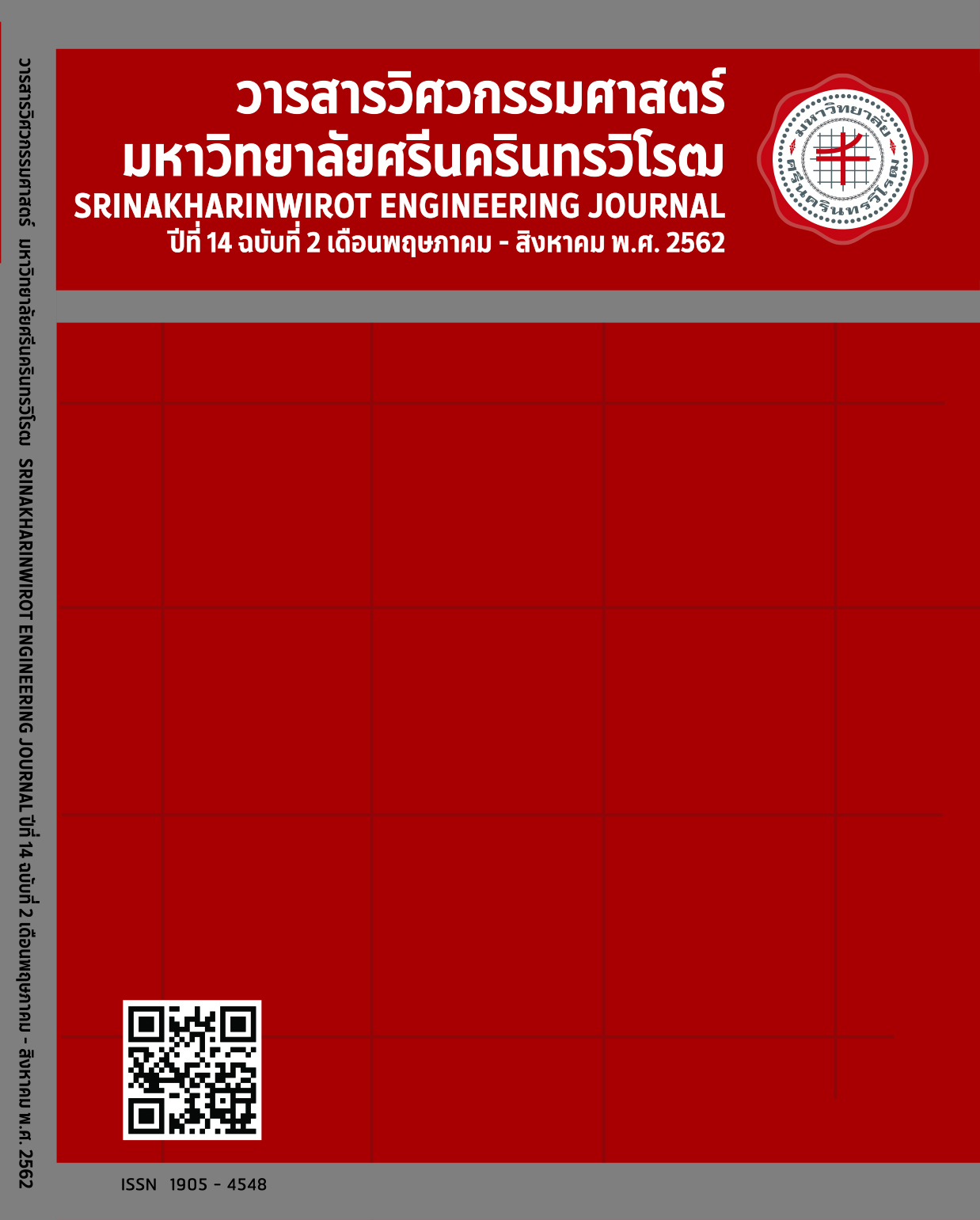Studies on Germination of Brown Rice Germ for the Development of High-Efficiency Automatic Germinating System
Main Article Content
Abstract
This research studies the germination behavior of brown rice for the development of
automatic germination prototype for high efficiency. It can replace the culture of a community
enterprise. This system consists of a heat and moisture content generator, water tray, brown rice tray
and water tank. The automatic germination control systems included water filling, soaking, curing,
leaching and controlling the temperature and relative humidity conditions. The germination of
jasmine rice 105 was compared between the automatic germination and the community enterprise
system in order to analyze the appropriate germination conditions and germ length at 24 and 48 hr.
In addition, it also considers the economic dimension of the germination system. It was found that
the germination time of 48 hours had optimum conditions for temperature control and relative
humidity control at 35.25±0.66 °C and 53.29±2.40% RH, respectively. This has a significant effect on
germination percentage and the germ length was 80±6.76% and 0.83±0.041 mm, respectively. They
were higher than that of other germination. Moreover, the economic analysis of the germination
system found that the germination capacity of brown rice was 540 kg per year. This system provided
16,956 Baht per year and 75,600 Baht per year of the electricity cost and the profit, respectively.
Furthermore, the payback period was about 8 month and 15 days’ appropriate investments.
Article Details
Copyright belongs to Srinakharinwirot University Engineering Journal
References
[2] W. Watchararparpaiboon, N. Laohakunjit and O. Kerdchocheun, “An Improved process for high quality and nutrition of brown rice production,” Food Sci. Technol. Int., vol. 16, no. 147, pp. 147–158, 2010.
[3] J.S. Ngyuen and B. Ooraikul, “The physico-chemical, eating and sensorial properties of germinated brown rice,” Int. J. Food Agric. Environ, vol. 6, no. 2, pp. 119–124, 2008.
[4] I. Shoichi, “Marketing of value-added rice product in Japan: germinated brown rice and bread,” in FAO Rice Conf., Italy: Rome, And Agriculture 50, 2004, pp. 889–892.
[5] S. Parnsakhorn and J. Lungapin, “The easy to make germinated brown rice and its benefit,” 1st ed, Triple Group Co, Ltd., Institute of research and development, RUMTT, Pathum Thani. Thailand, 2013.
[6] National Bureau of Agricultural Commodity and Food Standards, “Good manufacturing for germinated brown rice,” Ministry of Agriculture and Cooperatives, Bangkok, Thailand, Sep. 2012.
[7] K. Ohtsubo, K. Suzuki, Y. Yasui and T. Kasumi, “Bio-functional components in the processed pre-germinated brown rice by a twin-screw extruder,” J. Food Compos. Anal. vol. 18, pp. 303-316, 2005.
[8] W. Varanyanond, P. Tungtrakul, V. Surojanametakul, L. Watansiritham and W. Luxiang, “Effect of water soaking on gamma aminobutyric acid (GABA) in germ of different Thai rice varieties,” Kasetsart J. (Natural Science). vol. 39, pp. 411-415, 2005.
[9] D. Wattanachaiyingcharoen, “Seed technology in agronomy,” Dept. Agric. Sci., Faculty of Agriculture Natural Resources and Environment, Naresuan Univ., Phitsanulok, 1991.
[10] W. Rittidech, “Effects of germination on physicochemical properties, cooking and eating qualities of brown rice and red rice,”M.S. thesis, Dept. Agroindustry, Naresuan Univ., Phitsanulok, 1993.
[11] U. Wattanakul, W. Wattanakul and C. Sujarit, “Effects of temperature soaking, germination and cooking to thiamine GABA, antioxidants in sungyod malts and parboiled germinated brown rice,” Faculty of Science and Fisheries Technology, RMUTSV, Trang, Aug. 2013.
[12] C. Thongwanchai and A. Takkatong, “The design and construction equipment for producing high GABA germinated paddy,” M.S. thesis, Chem. Eng., Khon Kaen Univ., Khon Kaen, 2011.
[13] C. Tongwanchai, A. Artnaseaw and T. Kumsaen, “Producing apparatus of germinated paddy rice,” in ME-NETT23., Chiang Mai., 2011
[14] P. Tungtrakul, “Utilization of rice germ and germinated brown rice for health food products,” Kasetsart Univ. Res. Dev., Bangkok, 2017.
[15] D. Koonyodying, S. Elliott and P. Wangpakapattanawong, “Seed germination treatments of some rare tree species for forest restoration in Northern Thailand,” KKU Res. J., vol. 15, no. 10, pp. 951-964, 2010.
[16] SB. Patil, and MK. Khan, “Germinated brown rice as a value added rice product,” J. Food Sci. Technol., vol. 48, no. 6, pp. 661–667, 2011.
[17] Metropolitan Electricity Authority (2018, Dec. 6). Normal tariff with consumption [Online]. Available: https://www.mea.or.th/profile/109/111
[18] S. Piriyawat, “Transportation Engineering,”in chapter 6 Engineering Economics, Dept. Civil Engineering, Faculty of Eng., Burapha Univ., Chonburi, pp. 245–247, 2008.
[19] N. Niyomwan, “Application of Japanese mulberry paper production,” Documents for the seminar "Project mulberry paper development, Thip Chang Hotel, Lampang, June 1993


